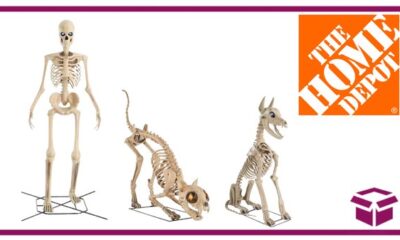Science
DNA Study Reveals 8,500-Year-Old Lineage in Argentina

Researchers have identified a previously unknown genetic lineage in central Argentina that has persisted for at least 8,500 years. This significant finding emerges from a comprehensive study of ancient DNA, which sheds light on the early human populations of the central Southern Cone, an area known to be one of the last regions in the world to be inhabited by humans.
The research, published in the journal Nature, highlights the genetic history of an area that stretches across a substantial part of Argentina. Although previous studies indicated human migration into the region over 12,000 years ago, there has been limited DNA research focusing specifically on the lineages present in this territory. A team of researchers undertook a genome-wide analysis of ancient individuals to better understand this gap in knowledge.
Uncovering Ancient Genetic Connections
To conduct this study, the team analyzed 344 bone and tooth samples from 310 individuals, who lived between 10,000 and 150 years ago. They successfully retrieved genome-wide data from 238 samples and enriched ancient DNA libraries for over 1.2 million targeted single-nucleotide polymorphisms (SNPs). The researchers then compared these findings with previously reported data for 588 pre-European contact Native or Indigenous Americans, as well as data from modern Native Americans.
The analysis revealed a deep genetic lineage that has existed in central Argentina for over 8,500 years. This lineage has shown remarkable continuity, with modern Argentinians still sharing DNA with this ancient group. The researchers noted that this lineage has endured through significant environmental challenges, including periods of severe drought.
As the authors summarize, “We found that the central Argentina lineage is geographically structured along two clines, one reflecting admixture with central-Andes-like ancestry and the other with Middle Holocene Pampas-like ancestry.” This lineage coexisted with others and became the predominant ancestry in the Pampas region after 800 years ago.
Implications for Indigenous Population History
The study also indicates that the central Argentine lineage expanded southward and began admixing with other groups at least 3,300 years ago. The researchers found evidence of genetic connectivity between the people of central Argentina and central Andes lineages as early as 4,600 years ago. Such findings provide a valuable genetic framework for understanding the history of Indigenous populations in Argentina and the broader Southern Cone.
Despite some intermingling with other groups, evidence suggests that this lineage largely maintained a degree of genetic homogeneity over millennia. The researchers point to multiple languages existing in the region, alongside this genetic consistency, which may reflect a kinship-based societal structure. This structure, similar to the ayllu system observed in Andean cultures, promotes within-group marriage to preserve resources and foster cooperation.
The researchers concluded that while there was limited gene flow among communities for extended periods, future studies with more extensive sampling could further clarify the dynamics of migration and admixture in the region.
This groundbreaking research not only enhances our understanding of Argentina’s ancient populations but also offers insights into the broader patterns of human migration and adaptation in the Americas. The study underscores the importance of genetic research in unraveling the complexities of human history and ancestry.
-

 Politics2 weeks ago
Politics2 weeks agoHamas Chief Stresses Disarmament Tied to Occupation’s End
-

 Science2 weeks ago
Science2 weeks agoOhio State Study Uncovers Brain Connectivity and Function Links
-

 Entertainment2 weeks ago
Entertainment2 weeks agoMegan Thee Stallion Exposes Alleged Online Attack by Bots
-

 Science3 weeks ago
Science3 weeks agoResearchers Challenge 200-Year-Old Physics Principle with Atomic Engines
-

 Top Stories2 weeks ago
Top Stories2 weeks agoFederal Agents Detain Driver in Addison; Protests Erupt Immediately
-

 Top Stories2 weeks ago
Top Stories2 weeks agoOrioles Hire Craig Albernaz as New Manager Amid Rebuild
-

 Entertainment2 weeks ago
Entertainment2 weeks agoPaloma Elsesser Shines at LA Event with Iconic Slicked-Back Bun
-

 Business2 weeks ago
Business2 weeks agoHome Depot Slashes Prices on Halloween Favorites Up to 75%
-

 Entertainment2 weeks ago
Entertainment2 weeks agoSyracuse Stage Delivers Lively Adaptation of ‘The 39 Steps’
-

 World3 weeks ago
World3 weeks agoGlobal Military Spending: Air Forces Ranked by Budget and Capability
-

 Top Stories2 weeks ago
Top Stories2 weeks agoWill Smith Powers Dodgers to World Series Tie with Key Homer
-

 Politics3 weeks ago
Politics3 weeks agoNHP Foundation Secures Land for 158 Affordable Apartments in Denver









